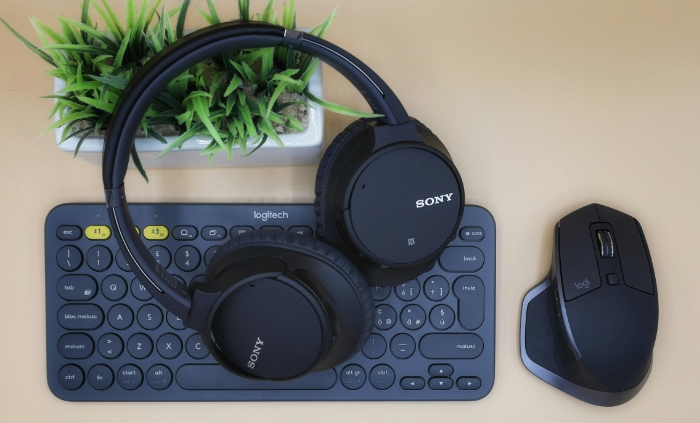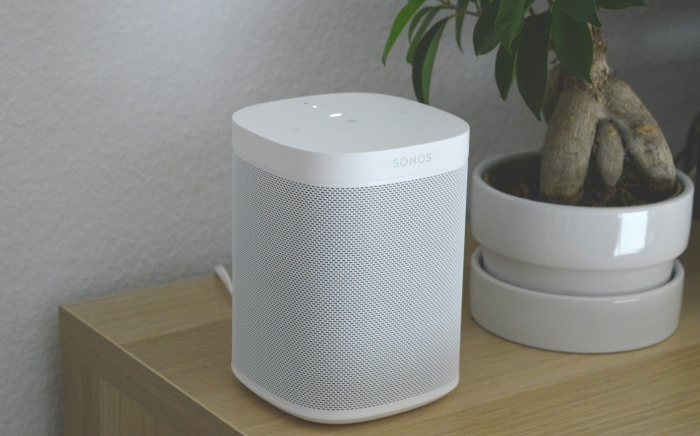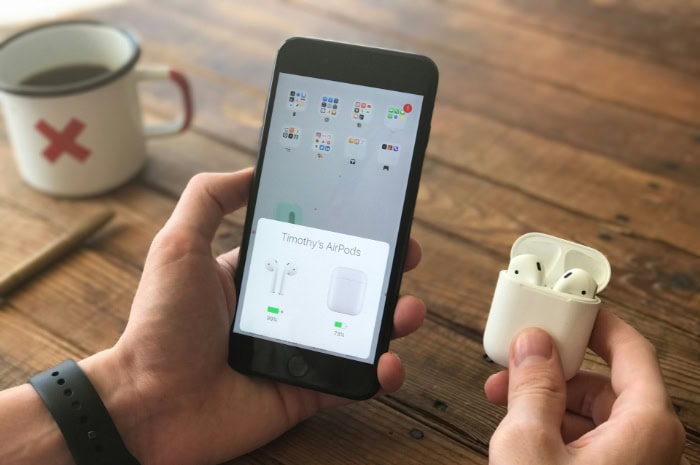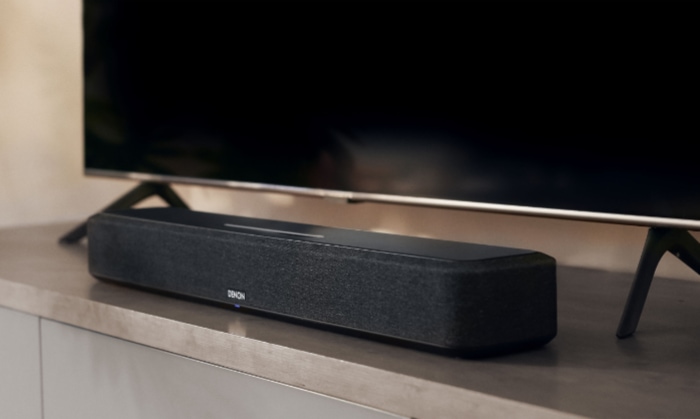Bluetooth Range: How Far Can It Go?

From streaming music on wireless headphones to connecting smart home devices, Bluetooth has become an essential technology that powers seamless communication in countless modern gadgets. One of the most important aspects of Bluetooth’s functionality is its range—the distance over which devices can reliably connect.
While some devices maintain connections across entire rooms, others struggle to function just a few feet away. What influences these differences?
Bluetooth Range Classifications
The range of Bluetooth devices is categorized into three distinct classes, each designed to accommodate different use cases and power requirements. These classifications determine how far devices can communicate and are directly influenced by their power output and intended applications.
Whether it’s a short-distance connection for wearable devices or extended coverage for industrial settings, the class of a Bluetooth device offers a clear indication of its range capabilities.
Class Specifications
Bluetooth devices are grouped into Class 1, Class 2, and Class 3 categories, with each class representing a different maximum range. Class 1 devices offer the longest range, typically reaching distances of up to 100 meters.
These are often used in industrial or professional applications where large coverage is essential, such as warehouses or outdoor communication systems. Their higher power output makes them capable of overcoming greater distances, even in challenging environments.
Class 2 devices are the most commonly found in consumer electronics, such as wireless headphones, smartphones, and smart home gadgets. With an effective range of about 10 meters, they are ideal for personal and indoor use, where long distances are typically unnecessary.
Their lower power output helps conserve energy, making them suitable for battery-powered devices.
At the other end of the spectrum are Class 3 devices, which offer a range of just about 1 meter. These devices are designed for short-range communications, often for applications where proximity is key, such as specific medical devices or wearable technology.
While their range is limited, Class 3 devices are efficient and consume very little power.
Power Consumption
The range of Bluetooth devices is intrinsically linked to their power consumption. Devices with a longer range, such as Class 1, require higher power output to maintain a stable connection over greater distances.
This higher power usage can have a significant impact on battery life, making Class 1 devices better suited for applications where a constant power source is available.
Class 2 and Class 3 devices consume less power due to their reduced transmission distances. For example, the typical transmit power required for Class 2 devices ranges between 0 dBm and +4 dBm, striking a balance between range and energy efficiency.
Class 3 devices further minimize power usage, often operating at levels as low as -20 dBm. The result is improved battery longevity, which is crucial for portable gadgets and wearables.
Choosing the right Bluetooth class often involves weighing range against energy efficiency. While higher transmit power ensures better range and stronger signals, it comes at the expense of faster battery drain.
On the other hand, devices with lower power outputs optimize battery life but are limited in how far they can communicate reliably. Understanding this relationship is critical when designing or selecting Bluetooth-enabled devices for specific purposes.
Technical Fundamentals

Bluetooth technology operates on principles of wireless communication that ensure flexibility and convenience across a wide range of devices. To fully appreciate its range capabilities, it’s essential to examine the technical aspects that influence its performance.
From the way signals travel to the evolution of the Bluetooth protocol, each factor plays a role in determining how devices connect and interact.
Signal Characteristics
Bluetooth operates in the 2.4 GHz frequency band, a globally available spectrum also used by Wi-Fi, cordless phones, and other wireless technologies. This band is unlicensed and accessible worldwide, making it ideal for universal compatibility.
However, operating within this frequency range comes with certain limitations due to how radio waves behave.
Radio wave propagation is a critical factor in Bluetooth’s performance. Within the 2.4 GHz band, radio waves can travel efficiently but are more susceptible to interference and absorption by obstacles like walls, metal, and water.
The signal weakens as it encounters obstructions, which directly impacts the effective range. For instance, an open environment allows the signal to reach its maximum potential, while an indoor setting with thick walls can significantly reduce coverage.
Another critical consideration is receiver sensitivity. A device’s ability to detect and interpret a signal depends on how weak of a signal it can still process.
Lower receiver sensitivity thresholds allow devices to detect faint signals, increasing the effective range in certain scenarios. However, sensitivity isn’t only about distance; it also ensures a stable connection by maintaining data integrity.
Together, these signal characteristics dictate how far and how well Bluetooth devices can communicate under specific conditions.
Protocol Versions
Since its inception, Bluetooth technology has undergone numerous upgrades that have improved its range, efficiency, and speed. Classic Bluetooth, introduced in the late 1990s, was a revolutionary means of wireless communication, but its range and data transfer rates were relatively limited.
Over time, newer versions have addressed these limitations, introducing advanced features that enhance both performance and connectivity.
Bluetooth 4.0, known as Bluetooth Low Energy (BLE), was a significant milestone for power efficiency, offering a solution for devices that required prolonged battery life. While it excelled in energy conservation, its range was still modest.
Bluetooth 5.0, and subsequent iterations, brought substantial improvements, doubling the maximum range of earlier versions and quadrupling the speed under optimal conditions. This increased range made it suitable for applications like smart homes, industrial automation, and IoT environments.
An important trade-off exists between data rate and range. Higher data rates require more bandwidth, which limits the effective range due to increased signal attenuation.
In contrast, lower data rates allow signals to travel farther while maintaining stability. Bluetooth 5.0 introduced a feature called “long-range mode,” which sacrifices high-speed data transmission in favor of extended coverage, proving especially valuable in applications where distance is prioritized over speed.
Both signal characteristics and protocol advancements illustrate how Bluetooth has evolved, balancing range, power efficiency, and speed. These technical fundamentals ensure the technology remains adaptable to a vast array of use cases, from personal devices to complex industrial ecosystems.
Environmental Factors

Bluetooth performance can vary significantly depending on the surrounding environment. While technical specifications define the theoretical range and capabilities of Bluetooth devices, real-world conditions often introduce challenges that affect signal strength and stability.
Physical obstacles and external interference are two primary factors that influence how effectively Bluetooth devices communicate. Recognizing how these elements impact performance is essential for optimizing connections and reducing disruptions.
Physical Obstacles
The materials and structures in an environment play a significant role in determining how far a Bluetooth signal can travel. Walls made of dense materials like concrete, brick, or reinforced steel can dramatically weaken signals, reducing both range and reliability.
Thicker walls or those with multiple layers further amplify this effect. In contrast, thin drywall or wooden partitions allow signals to pass through more easily, enabling better connectivity.
Metal surfaces and objects present another challenge, as they reflect and scatter radio waves instead of allowing them to pass through. This interference creates areas of signal disruption, known as dead zones, where connectivity may be lost entirely. Metal cabinets, appliances, or even furniture near Bluetooth devices can inadvertently block or degrade performance.
Water and organic materials, including the human body, are also highly absorbent to Bluetooth signals. For instance, when a device is held in the hand or placed in a pocket, the signal may weaken because it is absorbed by the body.
Similarly, aquariums, large plants, or water-filled objects can act as barriers. These effects are particularly noticeable in environments with multiple sources of obstruction, making it critical to consider placement and layout when using Bluetooth technology.
External Interference
In addition to physical barriers, external interference from other wireless technologies and electronic devices can compromise Bluetooth signals. Bluetooth operates on the crowded 2.4 GHz frequency band, which is shared by a variety of technologies, including Wi-Fi networks.
When multiple devices use this frequency simultaneously, they create signal congestion, leading to slower performance or intermittent connectivity issues. Devices near strong Wi-Fi networks, particularly those using older technologies, are more prone to encountering such problems.
Competing Bluetooth devices in the same vicinity can also create interference. For example, in densely populated areas like offices or public spaces, multiple active Bluetooth signals can overlap, causing conflicts and reducing performance.
While modern Bluetooth protocols incorporate techniques like frequency hopping to mitigate interference, the presence of many devices still poses challenges for maintaining stable connections.
Other types of electronic equipment may also interfere with Bluetooth signals, even if they do not use the 2.4 GHz band. Devices emitting electromagnetic radiation, such as microwaves or poorly shielded electrical devices, can create disturbances that disrupt signal integrity.
These forms of interference are often unpredictable, making it important to minimize the proximity of Bluetooth devices to such sources whenever possible.
Environmental factors, whether in the form of physical obstacles or external interference, can significantly impact the range and quality of Bluetooth connections.
Range Optimization

Maximizing Bluetooth performance is often about making the most out of the technology’s strengths while addressing environmental and technical challenges. Optimizing the placement of devices and enhancing the signal through specialized techniques can significantly improve range and stability.
Careful attention to these factors ensures that Bluetooth devices perform as intended across various applications, from personal use to more complex setups.
Device Placement
The position of Bluetooth devices plays a critical role in determining signal quality and range. Maintaining a clear line of sight between devices is one of the most effective ways to ensure a strong connection.
Obstacles like walls, furniture, or even people can disrupt the path of the signal, causing it to weaken or degrade before reaching its intended destination. Placing devices within the same room or in a space with minimal obstructions can maximize performance.
Mounting height is another important factor to consider. Bluetooth signals tend to propagate more effectively when devices are elevated off the ground.
Placing devices at a moderate height, such as on a shelf or table, helps minimize interference from objects on the floor and provides better coverage. For larger spaces, strategically positioning devices at equal heights can create consistent signal reach throughout the area.
Antenna orientation also contributes to the efficiency of signal transmission. Many Bluetooth devices have built-in antennas that work best when aligned correctly.
Experimenting with the angle or positioning of devices can help find the optimal configuration for maintaining a strong and steady connection. For example, a slight adjustment to the angle of a Bluetooth speaker or hub can sometimes improve overall performance, especially in challenging environments.
Signal Enhancement
When placement adjustments alone are not enough, there are advanced methods to enhance Bluetooth signals and extend their range. One of the most impactful approaches is choosing devices with high-quality antennas or selecting external antennas specifically designed to improve Bluetooth performance.
Antennas with a stronger gain or more directional focus can boost signal strength and help maintain connections over longer distances.
Range extenders and repeaters are another solution for addressing signal limitations. These devices act as intermediaries, receiving and amplifying the Bluetooth signal before transmitting it to the target device.
This approach is particularly effective in large homes, offices, or industrial settings where devices are spread out across a wide area.
For more complex networks, mesh networking technology offers a scalable way to optimize Bluetooth range. Mesh networks allow multiple devices to work together, passing information between nodes to create a more robust and expansive network.
This setup is especially useful in applications like smart homes or industrial IoT systems, where many devices need to communicate over a vast area.
Whether through thoughtful placement or advanced signal enhancement techniques, Bluetooth range optimization can address even the most challenging connectivity scenarios. With a combination of practical adjustments and specialized tools, users can achieve greater coverage and reliability, no matter the environment or application.
Practical Applications

Bluetooth technology has become a vital enabler of wireless communication in various fields, with its adaptability allowing it to serve both consumer and industrial needs. Its ability to connect devices seamlessly has transformed everyday experiences and enhanced operational efficiency across sectors.
Whether used to simplify daily tasks or streamline large-scale systems, Bluetooth continues to expand its presence in real-world applications.
Consumer Devices
Bluetooth has become synonymous with convenience in consumer electronics, where its role in delivering wireless connectivity is indispensable. Wireless headphones and speakers are some of the most recognized Bluetooth-enabled devices, allowing users to enjoy audio without being tethered by cables.
By enabling high-quality sound transmission and hands-free operation, Bluetooth has redefined the way people interact with their personal and entertainment devices.
In smart homes, Bluetooth serves as the backbone for many connected gadgets, such as smart locks, light bulbs, and thermostats. These devices rely on Bluetooth for seamless communication and low-power operation, making it easier for users to control various aspects of their homes from a single smartphone or hub.
Its integration into smart home ecosystems has further amplified the ease and accessibility of home automation.
Wearable technology, such as fitness trackers, smartwatches, and health monitors, also depends heavily on Bluetooth for its functionality. These devices continuously gather data, such as steps walked or heart rate, and transmit it to smartphones for real-time tracking and analysis.
Bluetooth’s low-energy modes ensure these wearables maintain extended battery life while staying connected throughout daily activities, helping users monitor their health and stay connected on the go.
Industrial Uses
In industrial environments, Bluetooth plays a crucial role in automating processes and enhancing productivity. Warehouse automation, for example, benefits significantly from Bluetooth-based systems, which enable efficient management of inventory and equipment.
Barcode scanners, handheld devices, and automated guided vehicles rely on Bluetooth for accurate communication and data transfer, reducing human error and streamlining operations.
Bluetooth’s capabilities extend to Industrial IoT (Internet of Things) applications, where sensors, machines, and control systems communicate wirelessly to optimize workflows. By connecting devices over vast spaces, Bluetooth supports real-time data exchange and monitoring, allowing industries to identify inefficiencies, prevent downtime, and improve safety.
The flexibility and reliability of Bluetooth have made it a preferred choice for industrial environments where wired connections are impractical.
Asset tracking systems are another important use of Bluetooth in industrial settings. By attaching Bluetooth tags to tools, equipment, or shipments, companies can monitor their location and status in real-time.
This not only prevents loss or misplacement but also improves logistics and resource allocation. With the introduction of Bluetooth mesh networks, tracking systems have become even more capable, extending visibility across larger areas and enabling smoother operations.
Bluetooth’s role in both consumer and industrial applications highlights its versatility and reliability. From enhancing personal convenience to driving operational efficiency, Bluetooth continues to be an essential tool in modern technology-driven environments.
Conclusion
Bluetooth technology continues to shape how devices connect and communicate, offering flexibility and efficiency across personal and professional applications. Its range is influenced by a variety of factors, from device classifications and protocol advancements to environmental conditions and placement strategies.
The combination of technical principles, thoughtful optimization, and practical enhancements can significantly improve performance, allowing Bluetooth to meet diverse needs.
From wireless audio and smart home systems to industrial automation and asset tracking, Bluetooth’s adaptability makes it a crucial component of modern connectivity.
With careful consideration of factors like signal interference, placement, and range-enhancing techniques, users can maximize its potential and enjoy consistent, reliable performance tailored to their specific requirements.


